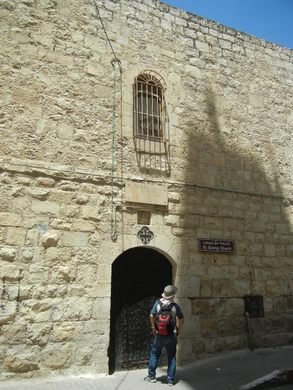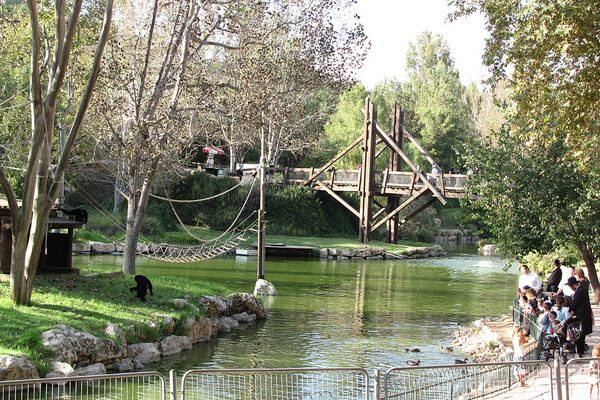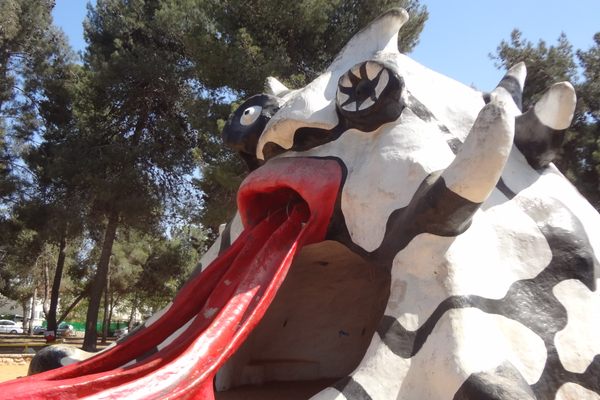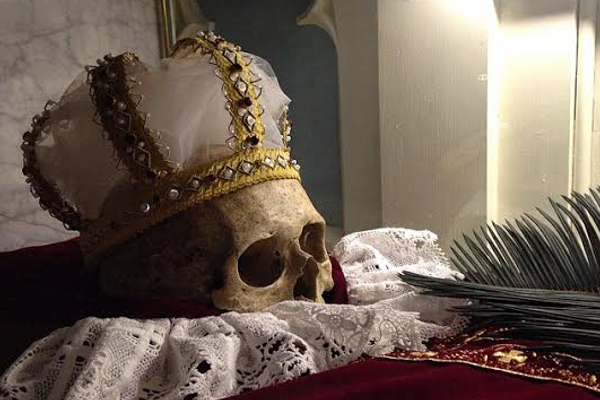The Shrine of Saint George
A historic chapel filled with colorful murals and a colorful past.
Just outside of Bethlehem in the Palestinian Territories, in the town of Beit Jala, the Chapel of St. George is not much to look at from the outside—and since it’s only open on Sundays, you’ll have to find a tour guide or someone who can call around and get it open for you.
Inside, the chapel is dominated by wall-to-wall, luxurious and surprisingly vivid frescos, including images of the eponymous saint defeating the dragon, as well as a host of other great Byzantine imagery. The modern church was built in 1912, but some parts of the chapel date back to the 16th century. On the dome of the chapel, there is a large portrait of Christ Pantocrator.
Beyond the murals, the church’s claim to fame is its long and odd history. For years the Chapel of St. George was used to house the mentally ill. According J. E. Hannauer’s Folklore of the Holy Land: Muslim, Christian, and Jewish, published in 1907, George’s shrine is described as a “sort of madhouse. Deranged persons of all three faiths are taken thither and chained in the court of the chapel, where they are kept for forty days on bread and water, the Greek priest at the head of the establishment now and then reading the Gospel over them, or administering a whipping as the case demands.” Although this practice has been discontinued in the hundred years since, one can still speak of someone going mad as “going to St. George’s.”
When he visited the shrine in the late 1990s, the writer William Dalyrymple found that while Jews had largely stopped using the place, Muslims still came regularly to this Christian shrine, leaving prayer mats and other offerings for the saint whom they call Khadr, “the Green One.” While no one is chained to the floor anymore, modern visitors can still undergo a vestige of the original treatment: a shackle is placed around your neck three successive times, before it’s opened and you’re instructed to step through it, thus “curing” yourself of any madness.





























Follow us on Twitter to get the latest on the world's hidden wonders.
Like us on Facebook to get the latest on the world's hidden wonders.
Follow us on Twitter Like us on Facebook